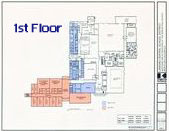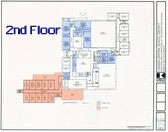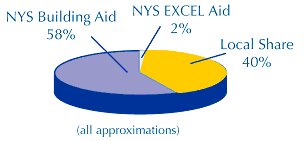- By Lansing Central School District
- News
 Print
Print | PUBLIC HEARINGS Monday, January 29, 2007 7:30 pm High School Room 101 |
On February 6, 2007, residents of the Lansing School District will be asked to vote on two propositions for capital building projects totaling $20,830,000.
PROPOSITION #1 – Alterations to All Schools and Bus Garage, High School Addition
PROJECT COST: $18,725,000
PROPOSITION #2 - High School Music / Technology Addition and Alterations
PROJECT COST: $2,105,000


Click to see plans in PDF format
There are two major driving forces for these propositions. This article focuses on the educational program needs at the High School. These include ensuring adequate instructional space for science, math, foreign language, fine arts, music, and technology as well as complying with space requirements for support service mandates for students with disabilities and No Child Left Behind, in addition to maintaining the District’s reputation as a quality educational institution. Check out last week’s article that addressed the issue of aging infrastructure, code compliance, and health and safety issues at all schools plus the bus garage and district office.
The Board of Regents has increased graduation requirements over the past decade. All general education students must now earn a Regents Diploma, which requires them to take more science, math and foreign language courses. General education students must now earn a total of 22 credits, an increase of 6 credits (6 full-year classes) from what was required a decade ago.
In addition, under the Individuals with Disabilities Education Act (IDEA), the school is required to provide separate space for testing and program instruction for children in need of academic intervention. The high school does not have space to provide these services, as required by law.
Fourteen high school instructional classrooms and an expanded art room are proposed. These include eight classrooms to replace existing classrooms that are being converted for science/lab, district offices, and the link to the new addition, plus six new classrooms. The proposed additions are NOT being driven by enrollment, but rather by the increase in State and Federal educational requirements for students, and mandated educational support services that are increasingly encroaching on the space available for regular academic programs. According to Michelle Stone, High School Principal, “We have been as creative as we can be in maximizing the space, but have run out of options without adding more space.”
The second proposition authorizes the district to undertake a $2,105,000 capital project that focuses on meeting music and technology curriculum mandates, as well as supporting the high level of student interest in these two areas. It also will eliminate high school students having to cross Ludlowville Road to access the 1955 Tech Building behind the middle school.
A large band/orchestra classroom, a large technology education classroom and two additional lavatories are proposed. The current band/orchestra room would be renovated for lesson space and storage of instruments and music supplies. The chorus room would be renovated to make space for a larger chorus and for music and instrument storage space. The spaces for chorus, band, and orchestra were designed for smaller groups (approximately 50 students each). Many of these groups now exceed 100 students and the spaces have become significantly overcrowded. In fact, many instrumental music lessons must now be conducted in the hallway.
(Proposition #2 is dependent on the passing of Proposition #1. It cannot be implemented unless both propositions pass.)
TAX IMPACT
The average annual tax impact for both propositions is 98 cents per $1,000 Assessed Value for 16 Years (2008-2024). This will be less for taxpayers with STAR or Senior STAR exemptions, as these lower the assessment. Breakdown by proposition is:
- Proposition #1 87 cents for $1,000 Assessed Value
- Proposition #2 11 cents for $1,000 Assessed Value
FUNDING SOURCES

New York State will bear approximately 60 percent of the cost of the project, with Lansing residents picking up the remaining 40 percent.
The district is slated to receive $410,509 in EXCEL Aid through special New York State legislation for school districts to utilize for capital building projects. This aid reduces the local tax impact of these projects beyond the amount of state aid that the district would normally receive.
ADDITIONAL INFORMATION
Answers to the most frequently asked questions can be found on the district’s website: www.lansingschools.org



